This post is about kingfishers along the Chobe river. I was on a CNP Safari photo river safari in early winter so the kingfishers I saw were resident. The inter-African migrants like the Woodlands and Grey-headed had already left. There are ten species of kingfisher in southern Africa.
“It may have been that the Quill Spirit had painted the bird with colours stolen from rock and leaf, and sky and fern, and enriched them by its fervour…” ~ Henry Williamson
Most kingfishers are brightly coloured and have unusual adaptations for display and feeding. Not all kingfishers are fishermen some are insect eaters.
“If you cannot do great things, do small things in a great way.” ~ Napoleon Hill
The largest of the kingfishers we saw along the river was the Giant kingfisher. The Giant kingfisher is sexually dimorphic, meaning the male and female have different plumage. Males and females differing in their underpart patterning. The male has a brown chest and throat while the female has a brown belly. The Giant kingfisher hunts from a perch overhanging the water. Kingfishers that fish have an amazing ability to see through the glare on the water’s surface and be able to judge the fish’s depth, adjusting for the refraction of the water.
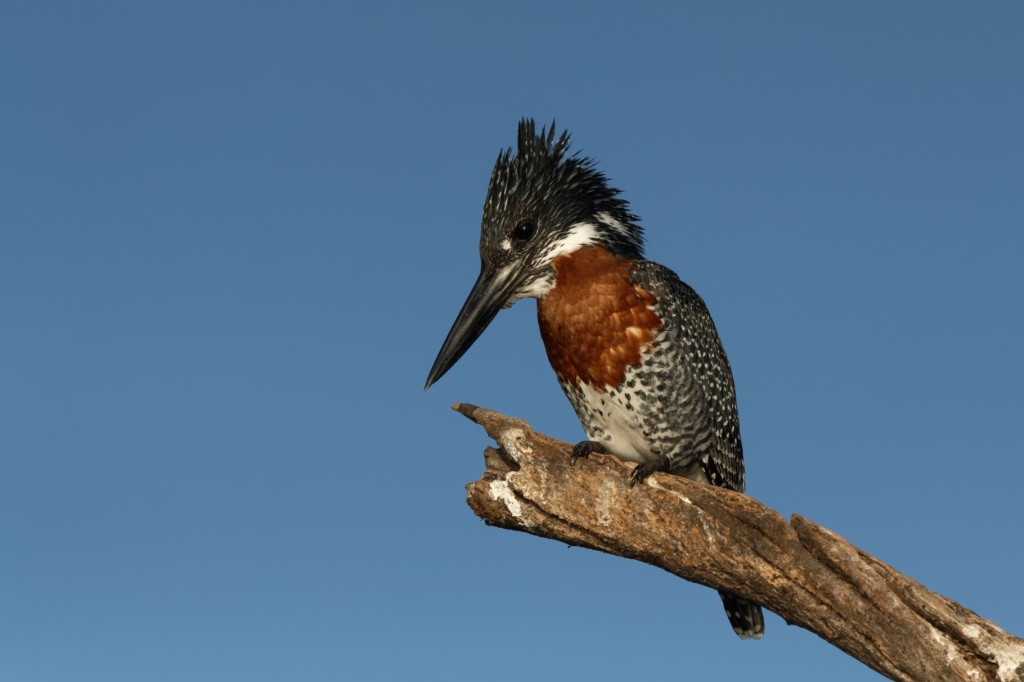
You will notice that most fishing kingfishers have black or dark colouring around their eyes. This is to reduce glare. Kingfishers are diurnal so hunt in broad daylight, invariably when there is plenty of glare.
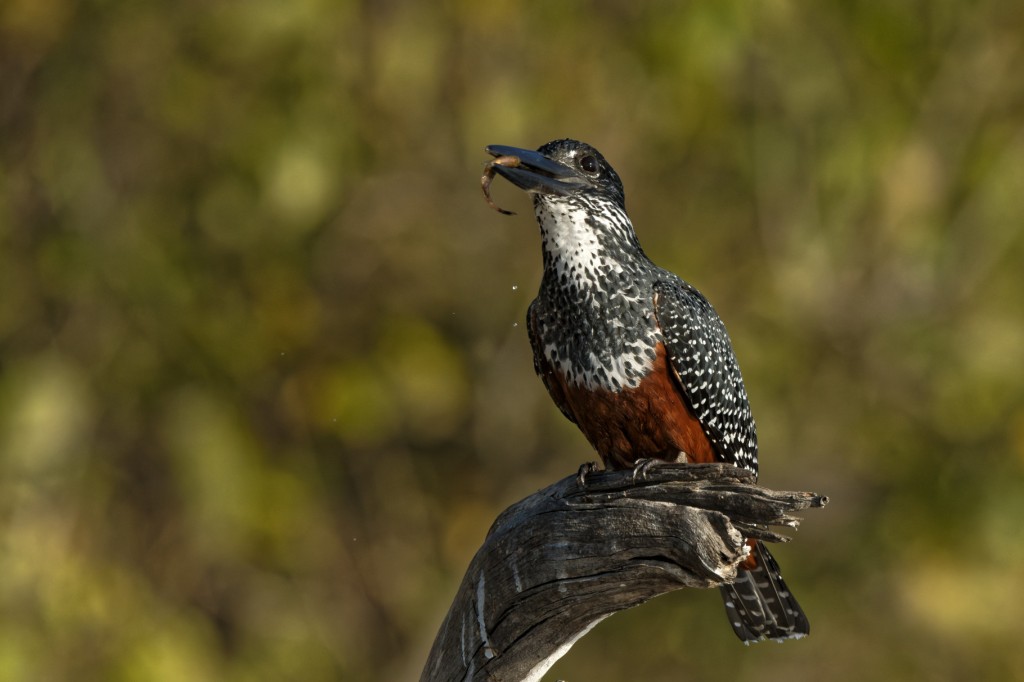
It seems that all kingfishers dive into the water to cool down on very hot days. Once a kingfisher has dived into the water it will preen itself, dry out and put all their feathers back into place. This female Giant kingfisher was doing just that.

The female Pied kingfisher has a black marking on her chest which looks like a gorget which is separated in the middle of the throat while the male also has a black gorget plus a black band across its neck below its gorget. It gets its name from it black and white plumage and mottled black and white wing patterning. The Pied kingfisher is mid-sized with the Giant at the large end of the size spectrum and the Pygmy at the small end.
“The good photo settles in your eye. The better photo settles in your mind but the best photo settles in your heart!” ~ Mehmet Murat ildan
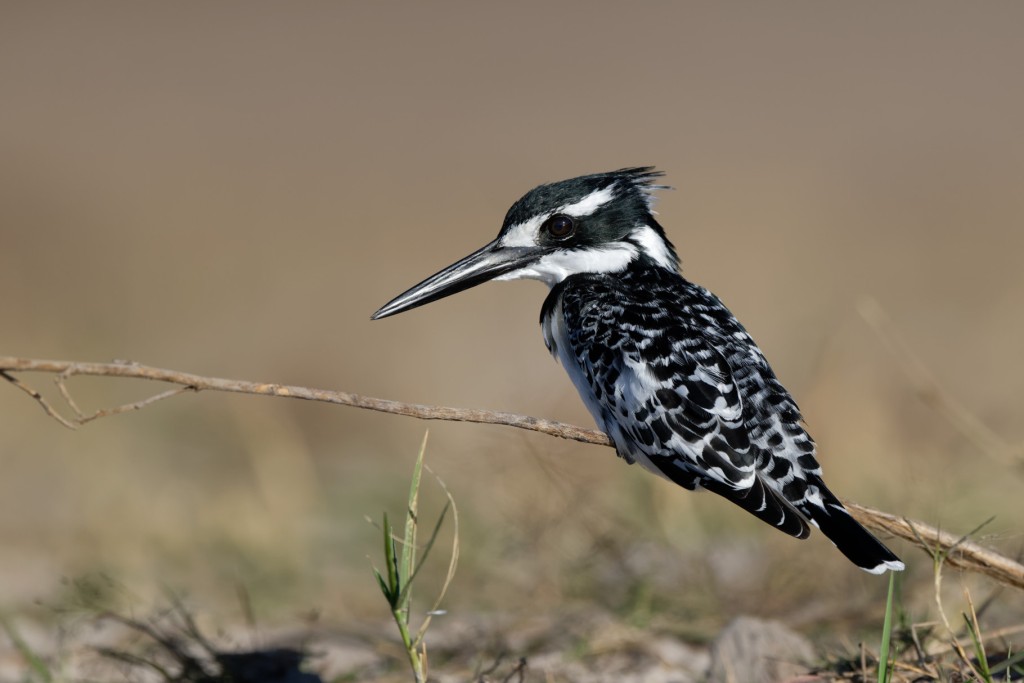
A male Pied kingfisher was hovering above potential prey in the Chobe river. Some birds, such as kestrels, remain motionless by “wind hovering” above a point on the ground as they fly into the wind at a speed equal to that of the wind. Other birds hover momentarily while foraging. The harrier is able to “wind hover” for a short period. Black shouldered kites can hover for an extended period by also facing into the wind. Sunbirds can also hover if they are not able to find a decent perch from which to drink the flower’s nectar. Most birds which are able to hover have a high aspect (length to width) ratio to their wings. The Pied kingfisher is a particularly good hoverer. Amazingly, it is able to keep its head dead still to maintain focus on its prey under water which is necessary to accurately assess the depth of the prey.

It is very seldom you will see the eye of a hovering kingfisher as they usually have their back to the sun again to reduce glare and improve visibility.
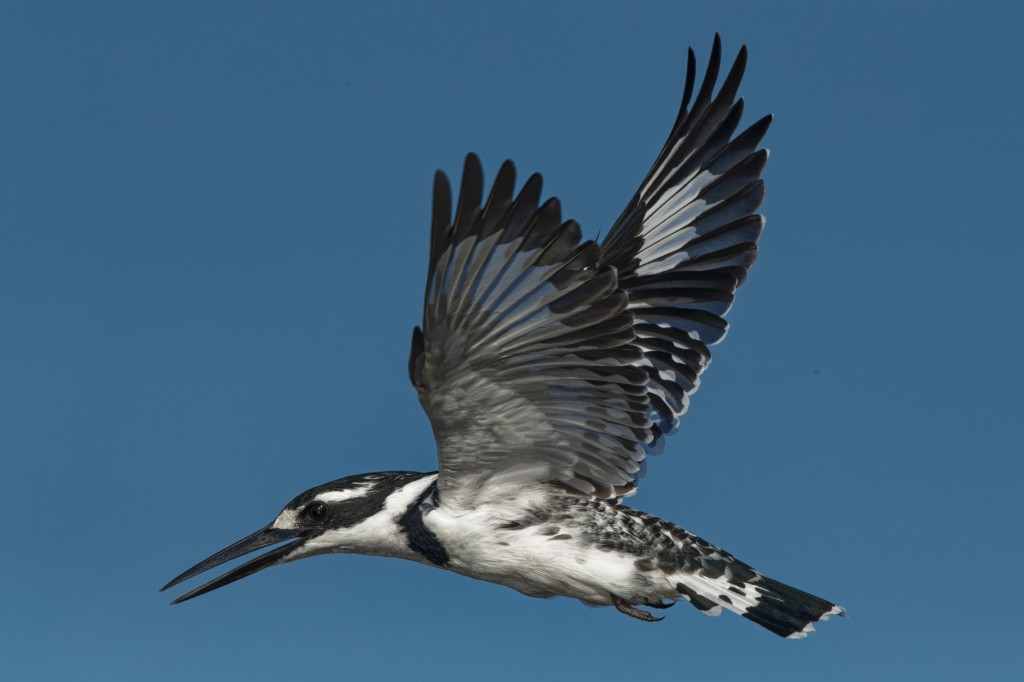
A female Pied kingfisher with her black gorget. Pied kingfishers are the only gregarious species. We often see several Pieds perched on the sand river bank. This specie is a co-operative breeder where helpers assist in caring for the chicks. In most cases, they remain close to their nest holes which they excavate in the river bank.
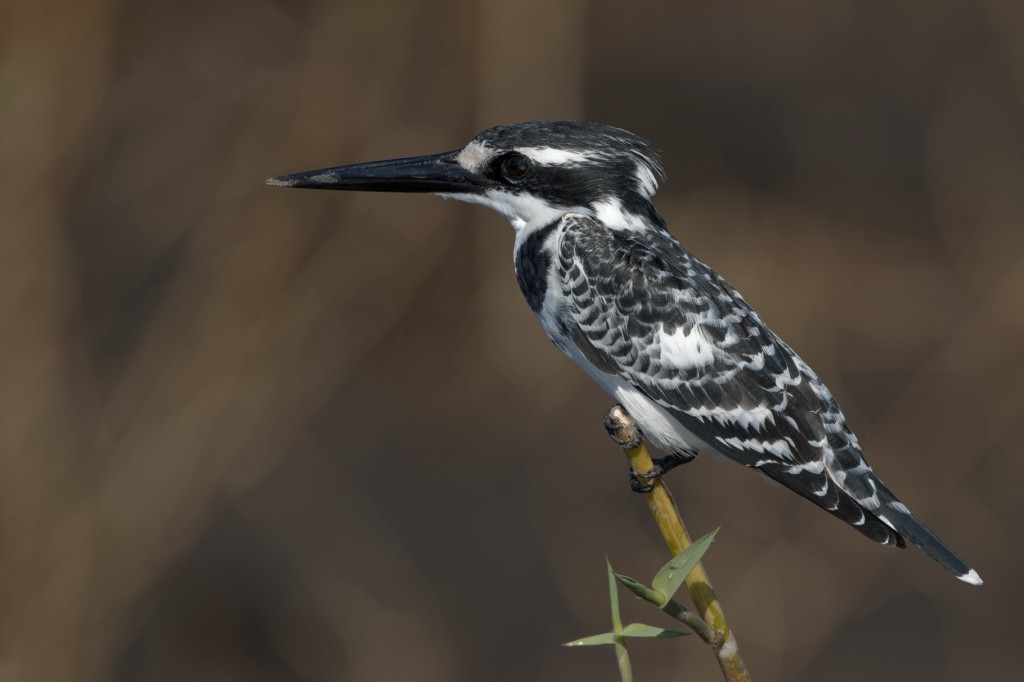
A female Pied kingfisher in flight just breaking out of a hover. The black beak is long approximately one third of the length of the bird.
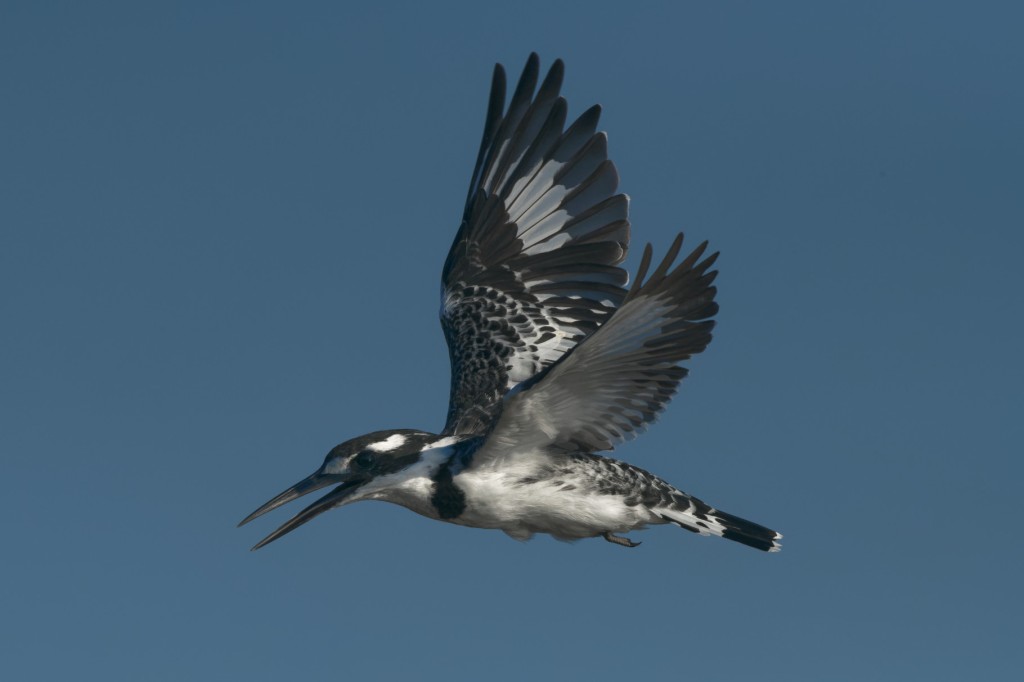
The Malachite kingfisher is usually found perched on a reed next the bank of the Chobe river. It is like a glistering little gem in the reeds. It’s striking red beak and feet catch you attention as does its deep royal blue back and neck plumage. This is also a fisherman. It is lightning quick when flying and hunting.
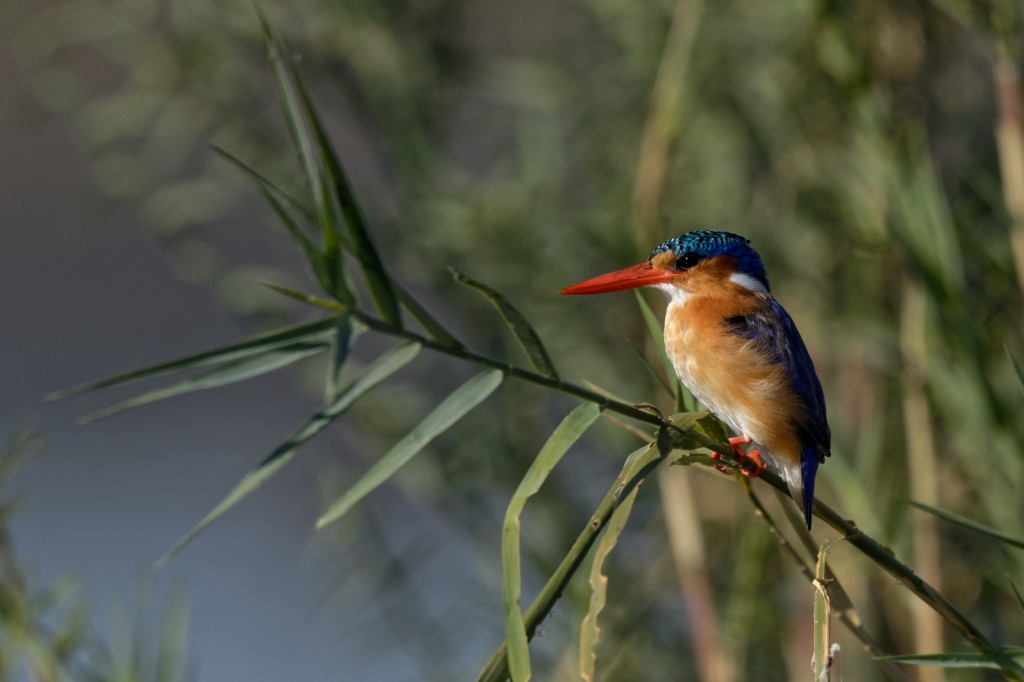
The Malachite has cobalt blue head, back of the neck and back plumage with a headdress of striped black and aquamarine crown feathers.
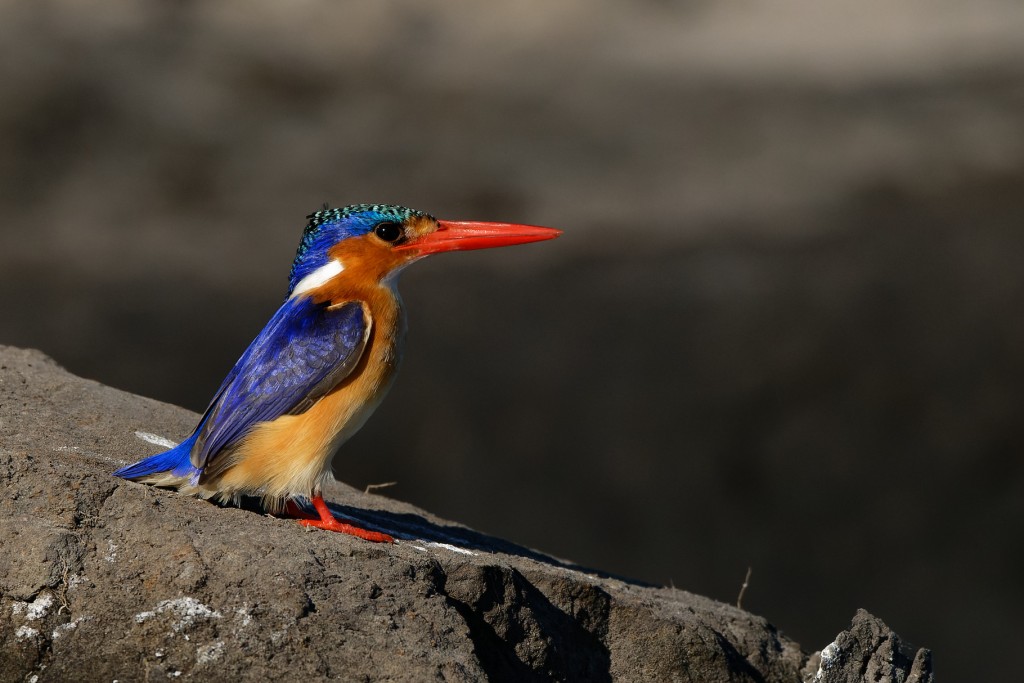
A Brown-hooded kingfisher has brown stripes on its head. It has a dark ring around its eyes to reduce glare. The back is black the the primary wing feathers and tail feathers are a vivid cobalt blue. The underparts are a buff coloured breast, with brown streaks on the sides. The difference between a Brown-hooded and Striped kingfisher is evident in the dark eye stripe behind the eye and dark upper mandible and red lower mandible in the Striped. The Brown-hooded has colouring on the head which varies from consistent brown to a buff with brown streaks but it does not have the dark stripe behind its eye and its beak is red, with a dark tip.
“Advice from the River. Go with the flow, immerse yourself in nature, slowdown and meander, go around the obstacles. Be thoughtful of those downstream. Stay current. The beauty is in the journey.” ~ IIan Shamir
The Brown-hooded kingfisher does not eat fish but feeds mostly on insects such as grasshoppers and small reptiles such as lizards. It is a perch hunter and once prey is caught it is brought back to a branch and thrashed against the branch to kill it.
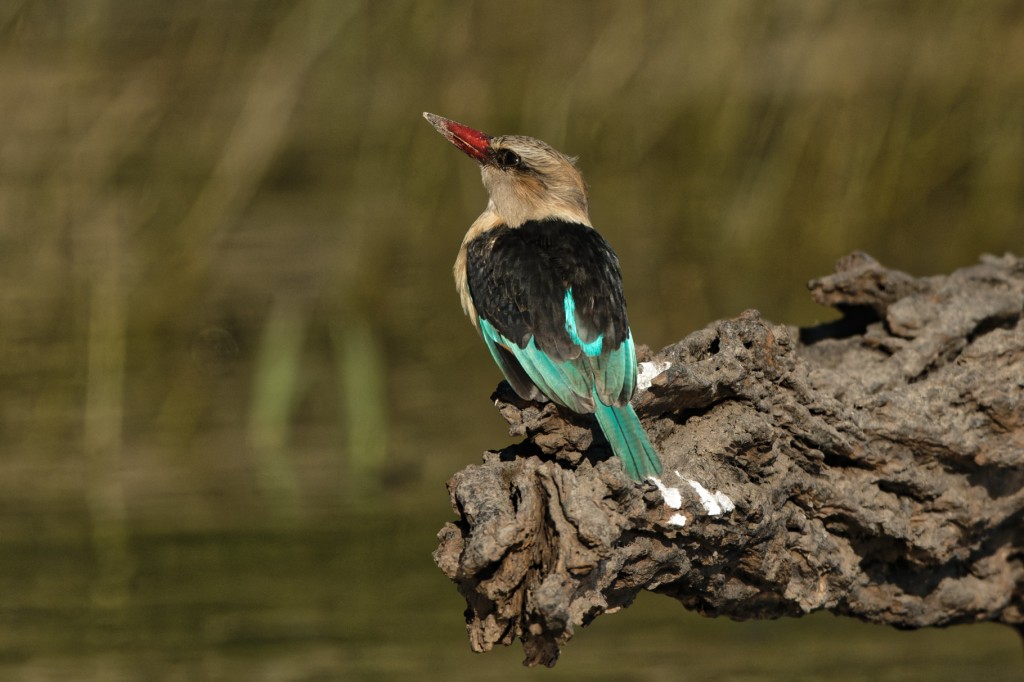
The Brown-hooded kingfisher is also an insect eater and does not feed on fish. It is often seen along the Chobe river because of the increased insect activity along the river bank. It has a characteristic brown head and red beak with a black tip.
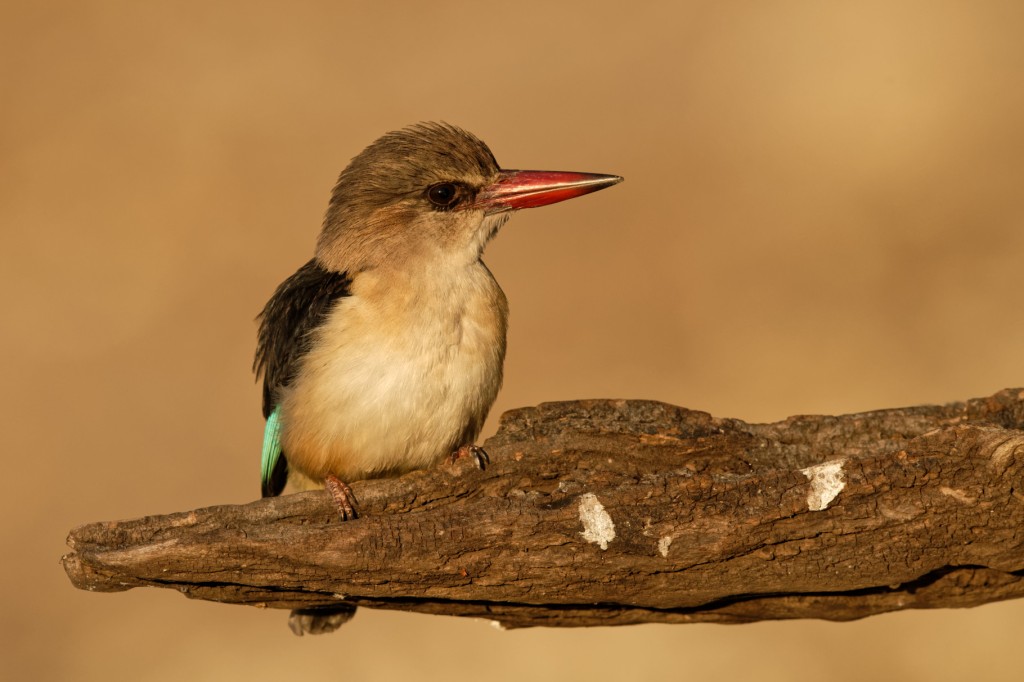
A pair of half-collared kingfishers live and hunting in the branches overhanging the river next to the Chobe safari lodge . They are very skittish and normally only seen in the shadowy undergrowth. It is a special sighting as they are uncommon. This kingfisher is a fisherman and hunts from a perch of a branch overhanging the water. At a distance, the Half-collared kingfisher could be mistaken for a Malachite but the Half-collared’s cobalt blue head and back beak are diagnostic. It has a cobalt blue collar with a wide parting across the middle of its throat. This kingfisher does not have the vivid cobalt blue colouring seen on the wing feathers of the Malachite.
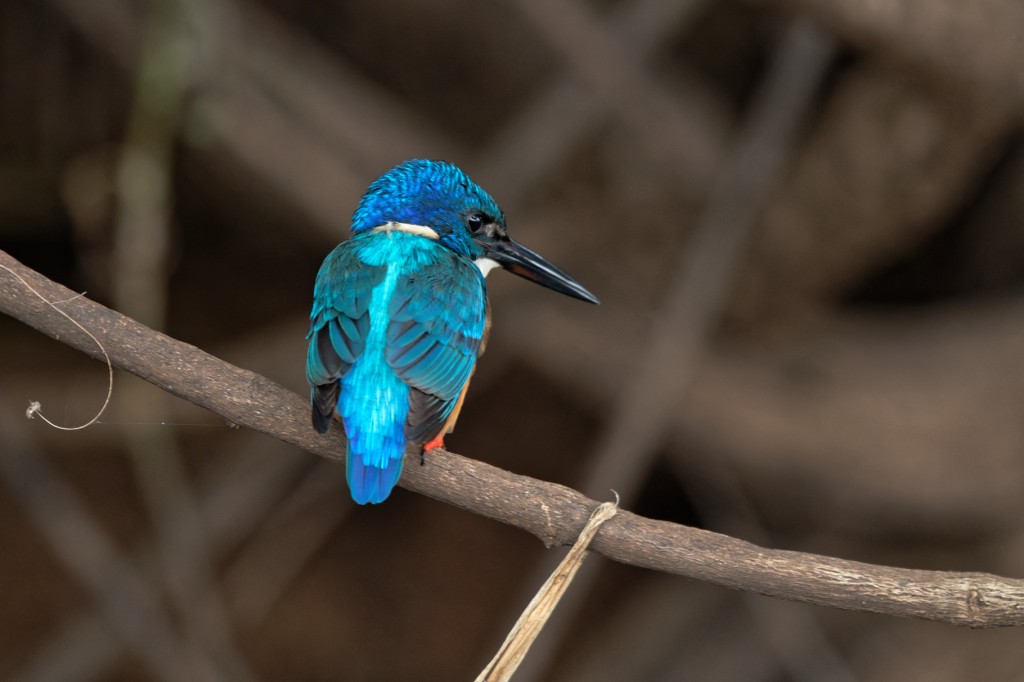
I have previously seen a Grey-headed kingfisher along the Chobe, but not this time and I cannot recall ever seeing a Pygmy kingfisher. The Pygmy like the woodland is an inter-African migrant so we did not see them in June.
“My life is shaped by the urgent need to wander and observe, and my camera is my passport.” ~ Steve McCurry
Seeing these kingfishers along the river in mid-winter is like finding living jewels. The smaller the more intense the colouring, and the more fleeting.
Explore, seek to understand, marvel at its interconnectedness and let it be.
Wishing you an inspired and insightful 2022.
Have fun, Mike

What a marvellous end to your blogging year! I look forward to more of your posts in 2022.
Your posts are a gift. Thank you for the inspiration.